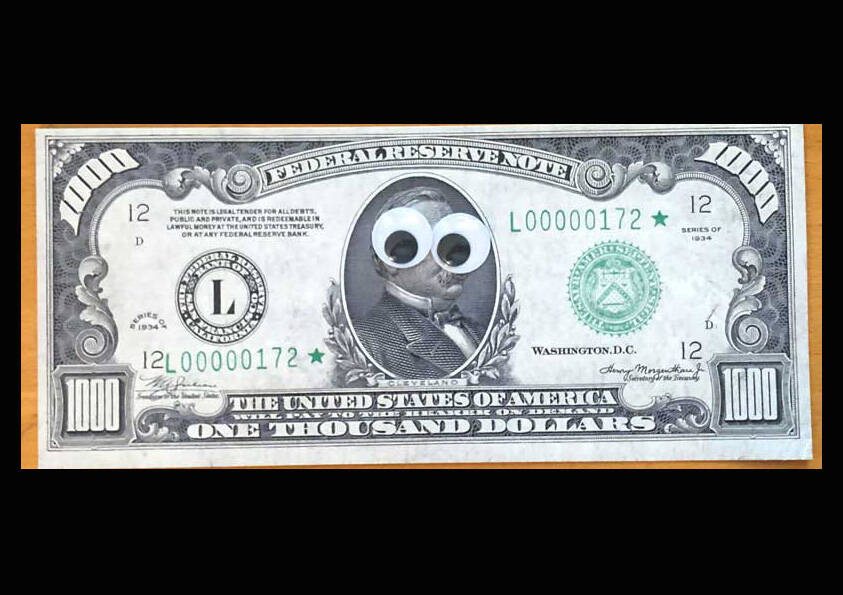By Morf Morford, Tacoma Daily Index
The (almost) Almighty Dollar
A strange thing happens when a currency becomes the world standard.
The cost/price/value of almost everything tilts/swings/gyrates based on the real (or perceived” value of the one currency everyone uses as their point of reference.
For longer than most us could remember, the US dollar has been the one universally recognized currency almost everywhere in the world.
When other currencies slide, or even decline a little bit in relation to this world currency, local markets (and prices) flounder or even collapse.
Sometimes entire nations (even empires) falter or fade based on their currency exchange.
Once every few centuries, the holder of the world’s currency also gets caught in the rip-tide of monetary value and exchange rates.
Pieces of eight
If you’ve ever seen any classic pirate movies or read any pirate-era tales, you’ve certainly run into the term “pieces of eight”.
That’s because the largest Spanish coin of the time (scored so it could be split into eight pieces) was the global coin of the realm (almost every “realm” around the world).
Britain did not allow its American colonies to issue their own money, so colonists used whatever foreign currency they could get their hands on.
Pieces of eight (from Spain), reals (from Spain and Portugal), and shillings (from England) were in circulation; the pieces of eight were most widely used.
Two pieces, or “two bits,” of the silver coin made up a quarter, which is why many (mostly older) Americans may refer to a quarter (of a dollar) as two bits.
The rise of a super power
In the summer of 1497, Ferdinand and Isabella of Spain were presiding over a rapidly growing empire.
Christopher Columbus had already claimed most of the Caribbean islands on their behalf. Pope Julius II had awarded virtually all of the western hemisphere to Spain.
They needed a strong currency to match their strong – and expanding empire.
Plus they had a seemingly unlimited monopoly of the gold and silver from South America.
By the mid-1500s under King Charles I of Spain, the Spanish dollar had become the world’s primary reserve currency.
From the Americas to Europe to Asia, global trade and commerce were quoted and often settled in Spanish dollars.
Dutch and Portuguese traders visiting Macau in the 1600s, for example, would buy goods from Chinese merchants using Spanish dollars.
In 1704, Queen Anne of Great Britain decreed that the Spanish dollar would be legal tender in the American colonies.
In 1792, the newly independent United States passed the Coinage Act which defined the US dollar as equivalent to the Spanish dollar (aka, the peso).
Nothing lasts forever, of course.
Eventually the Spanish Empire’s strength faded. The government defaulted on its debts, confiscated private wealth, and suffered multiple and ever more humiliating military defeats.
The Dutch guilder then began to displace the Spanish dollar in commerce and trade.
By the late 1800s, the British pound had become the world’s dominant reserve currency — matching the British Empire’s unparalleled colonial and economic power.
This lasted until the mid-20th century when, thanks to World War II, the United States dollar became the world’s primary reserve currency — a status the dollar has enjoyed – and taken for granted – for decades.
Having the world’s reserve currency is an extraordinary privilege. It means that the rest of the world literally HAS to stockpile your currency – and is usually glad to do so.
Every bank, around the world, in order to be a player in the global economy, needs to have US dollars on hand – and be ready to do any business, not in their own currency or the currency of their business partner, but in US dollars.
This also means that any fluctuation in the US economy, from interest rates to the stockmarket, reverberates, even accelerates, through local economies – even though they may be thousands of miles away.
And when uncertainty hits (like war or natural catastrophe) the world currency is the primary (and most safe) investment.
Until it isn’t.
The great curse of any reserve currency, however, is that most of us, and certainly our policy makers, believe the status of their currency will last forever.
For now, the dollar is still the top dog, only because it hasn’t been displaced (yet).
In fact, at the moment, and for as long as any of us could remember, the US dollar is historically strong – and seemingly invincible.
Despite inflation that has reached multi-decade highs, and the growing national debt, the dollar is near an all-time high against the British pound and Japanese yen. It’s at a 20 year high against the euro.
It’s strong against virtually every major currency – even against other asset classes including precious metals, crypto, and much more.
When one currency seems unassailable, especially when it, and the currencies dependent upon it, seem increasingly unstable, it might be good to quietly diversify one’s portfolio – preferable with something like “hard” assets that hold their value or at least something you’d be glad to have on hand as any currency fluctuates like a fickle breeze.





